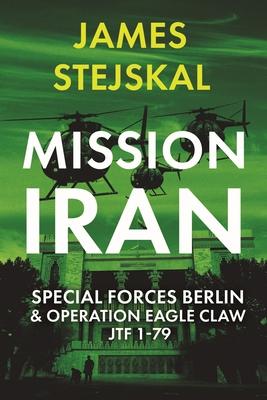
Book
Mission Iran: Special Forces Berlin & Operation Eagle Claw, Jtf 1-79
(Write a Review)
Unfortunately this title is no longer available
On 4 November 1979, "student" supporters of the Ayatollah seized the U.S. Embassy with over 60 hostages. Although the Cold War was in full swing, the Iran hostage crisis was a watershed for the United States. The counterterrorism learning curve, both political and military, would be steep and often deadly.
Detachment A had been established in Berlin early in the Cold War to harass and delay any Soviet military advance west. This Special unit trained relentlessly for every aspect of unconventional warfare, and was later assigned a second mission of counterterrorism. Due to this mix of skills, Det A would be called upon to undertake additional missions, including providing protection to General Al Haig and General Frederick Kroesen following assassination attempts. When American planners were trying to work out how to rescue hostages being held at two sites in the middle of a hostile country, it became apparent that the unit--the only US military dual-capability unit--would be integral to the effort.
The plan for Operation Eagle Claw, as it became known, was extremely complex. The first stage was intelligence gathering--no mean feat as most of the CIA's capabilities in the country had been eliminated. With operatives trained in intelligence work, fluent in many languages and adept at blending in, Det A took on the advanced recon of the targets. Then, when Delta Force admitted that it could only manage the assault of the Embassy, Det A volunteered to rescue the three Americans at the Foreign Ministry. Meanwhile for security purposes, all existing training and exercise commitments in Berlin would continue with no Teams broken up. This caused some consternation as none of the men wanted to miss out on this mission reminiscent of Son Tay.
Veteran and historian James Stejskal details Det A's unique and integral role in Operation Eagle Claw, based upon firsthand accounts of the operatives involved.
On 4 November 1979, "student" supporters of the Ayatollah seized the U.S. Embassy with over 60 hostages. Although the Cold War was in full swing, the Iran hostage crisis was a watershed for the United States. The counterterrorism learning curve, both political and military, would be steep and often deadly.
Detachment A had been established in Berlin early in the Cold War to harass and delay any Soviet military advance west. This Special unit trained relentlessly for every aspect of unconventional warfare, and was later assigned a second mission of counterterrorism. Due to this mix of skills, Det A would be called upon to undertake additional missions, including providing protection to General Al Haig and General Frederick Kroesen following assassination attempts. When American planners were trying to work out how to rescue hostages being held at two sites in the middle of a hostile country, it became apparent that the unit--the only US military dual-capability unit--would be integral to the effort.
The plan for Operation Eagle Claw, as it became known, was extremely complex. The first stage was intelligence gathering--no mean feat as most of the CIA's capabilities in the country had been eliminated. With operatives trained in intelligence work, fluent in many languages and adept at blending in, Det A took on the advanced recon of the targets. Then, when Delta Force admitted that it could only manage the assault of the Embassy, Det A volunteered to rescue the three Americans at the Foreign Ministry. Meanwhile for security purposes, all existing training and exercise commitments in Berlin would continue with no Teams broken up. This caused some consternation as none of the men wanted to miss out on this mission reminiscent of Son Tay.
Veteran and historian James Stejskal details Det A's unique and integral role in Operation Eagle Claw, based upon firsthand accounts of the operatives involved.
Paperback
$24.95